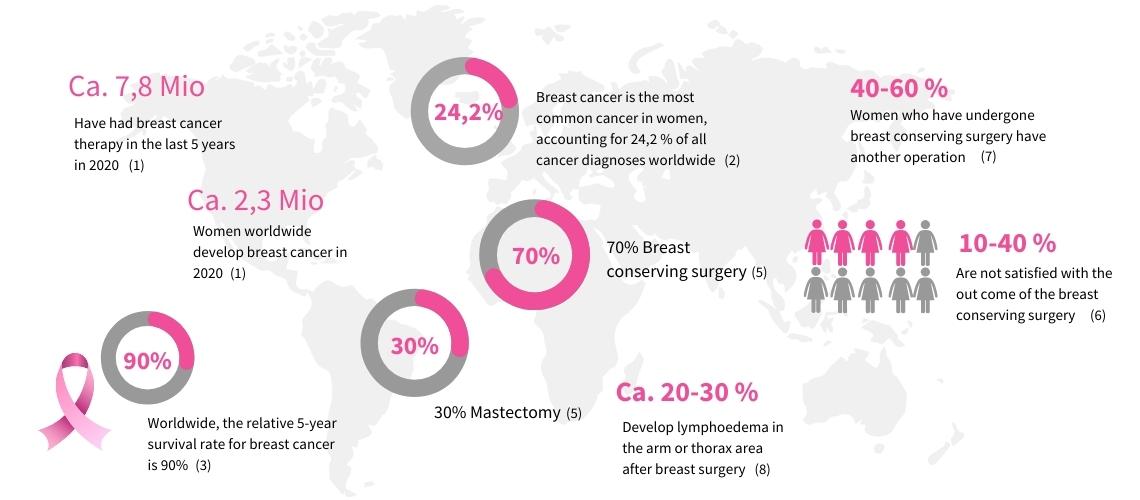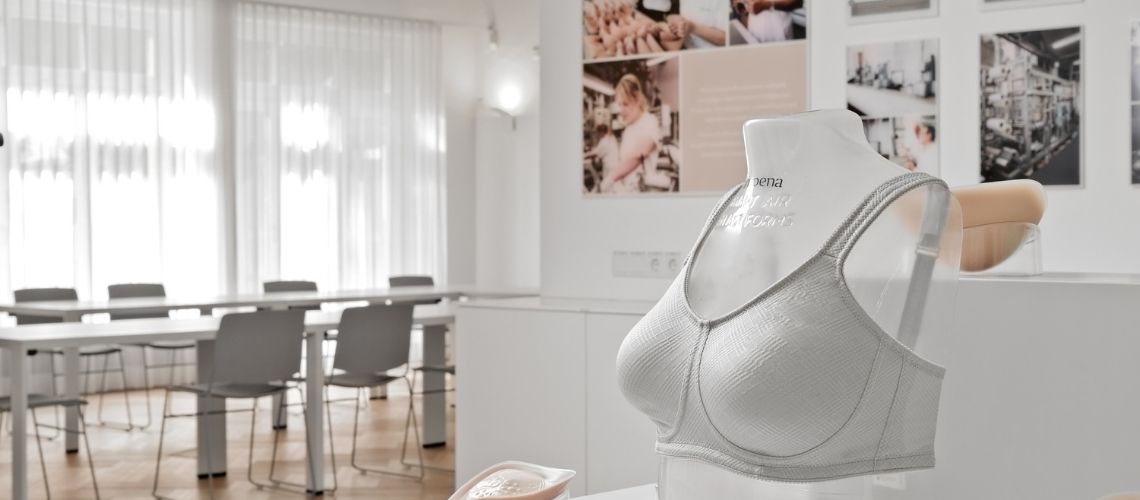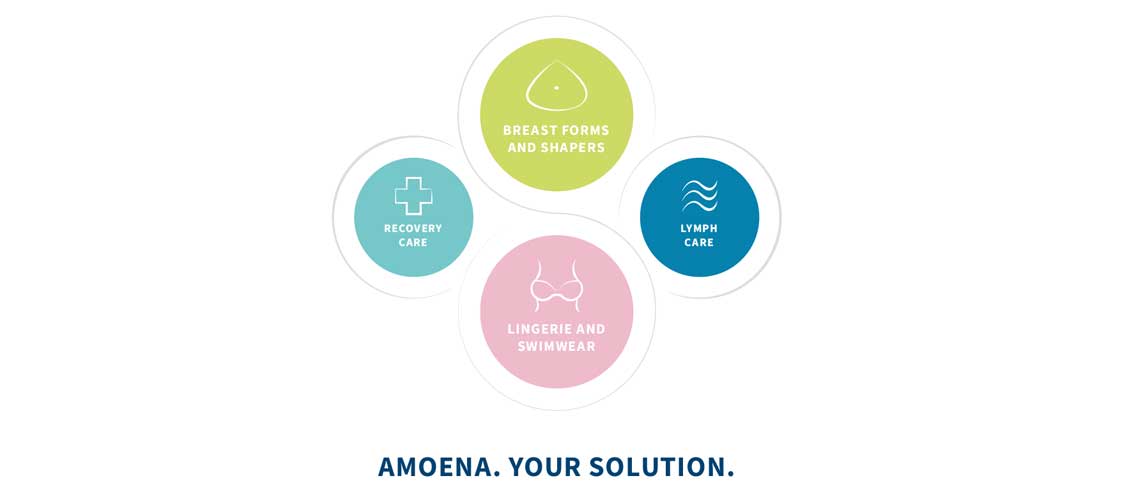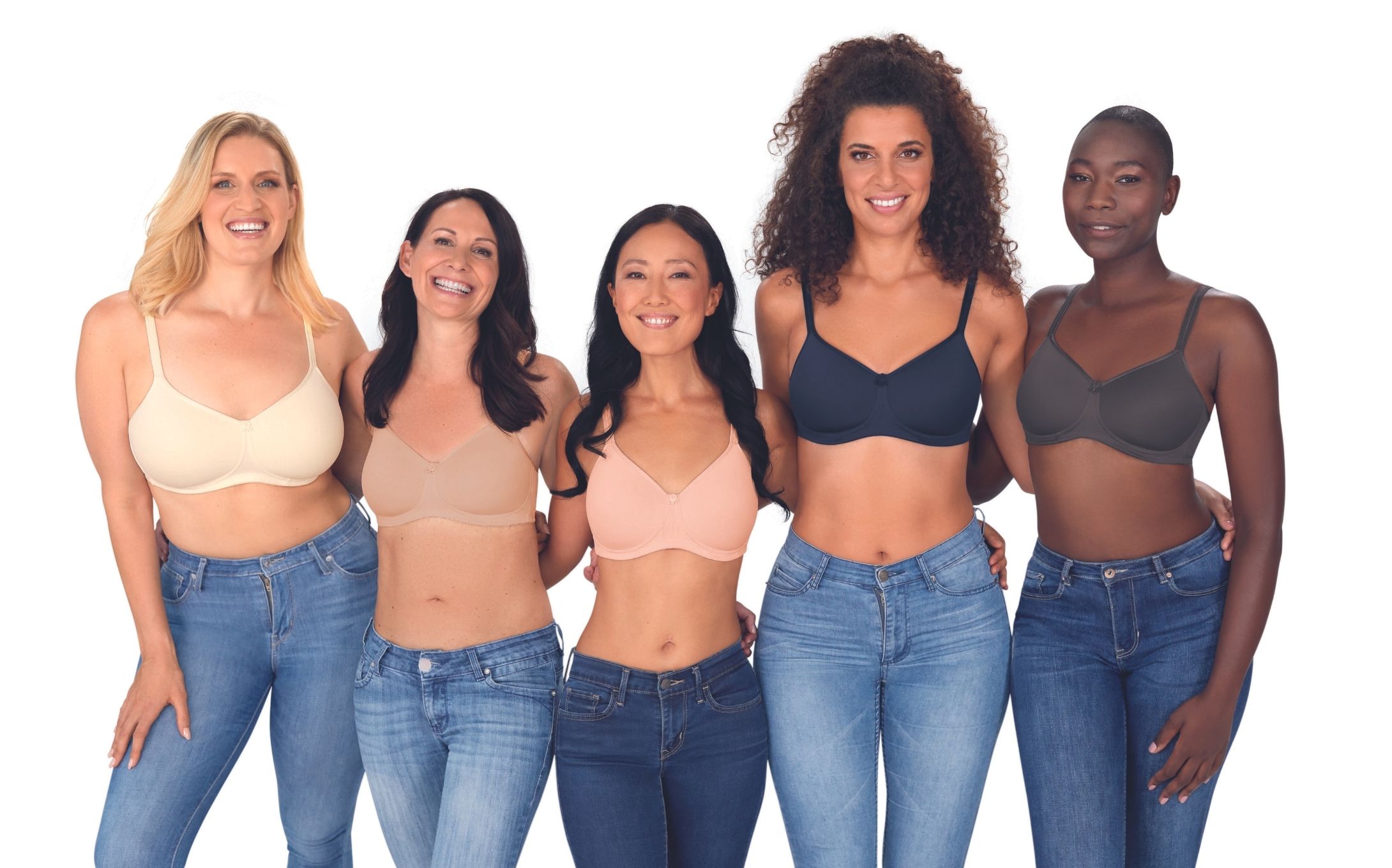Breast cancer is the most commonly diagnosed cancer in women, with 2 million new cases worldwide each year. In the course of their lives, an average of one in eight women will develop breast cancer. Statistically, most sufferers are diagnosed between the ages of 50 and 60. With thanks to good diagnostics, advanced treatment options and surgical interventions, the 5-year relative survival rate is now 90%. However, a lot changes for those affected after a breast cancer diagnosis. The diagnosis is followed by a surgical removal of the tumour and if necessary, the affected lymph nodes.
Today, around 70% of women undergo breast-conserving surgery and of an estimated 30% of those cases, the entire breast is removed. 40 - 60% of women who have had breast-conserving surgery have a second operation. The reason for this is the recurrence of symptoms or because the optical result is not satisfactory. This applies to 10-40% of women worldwide.
Since surgery and follow-up treatments are often serious procedures, the risk of secondary diseases also increases. Approximately 20-30% of women who have breast surgery, develop arm or thoracic lymphedema following their treatments.
At Amoena, our goal is to develop and offer products that improve the quality of life of affected women.
Worldwide motivation









